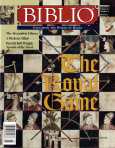He Who Waits
December 28, 2015 Leave a comment
 Five people, a fake tree, and some old boots. It’s certainly not an expensive production to put on. Nor complex: Two guys stand around waiting for someone, two other guys show up, leave, come back again, so does another. It has a beginning, middle and end only in the sense that it starts, goes on for a while and stops.
Five people, a fake tree, and some old boots. It’s certainly not an expensive production to put on. Nor complex: Two guys stand around waiting for someone, two other guys show up, leave, come back again, so does another. It has a beginning, middle and end only in the sense that it starts, goes on for a while and stops.
Samuel Beckett’s En Attendant Godot—known more widely by it’s English title, Waiting for Godot—broke new ground when it was first performed in 1953 at the Théâtre de Babylone in Paris. Bare even by minimalist standards, it’s enigmatic nature makes it possible to find all kinds of meaning in it, and people do. Read more of this post








